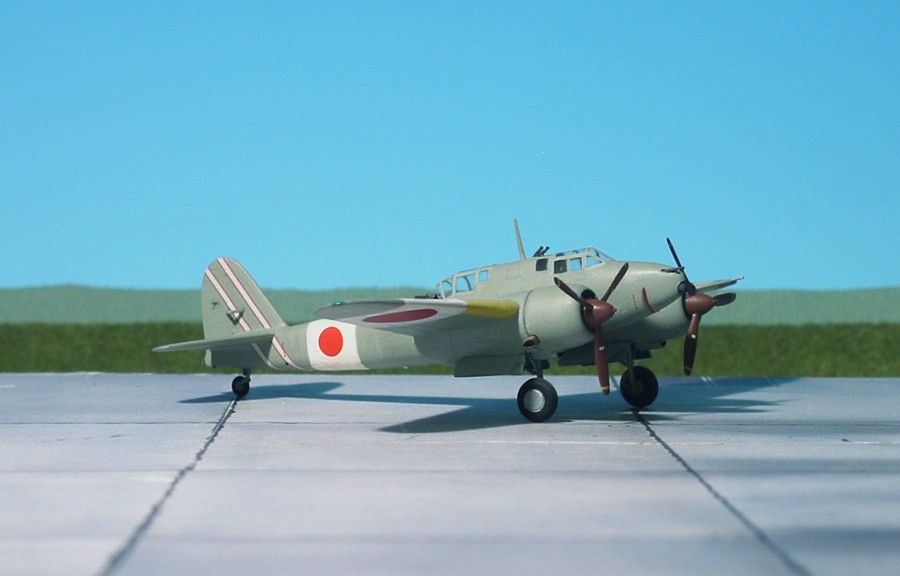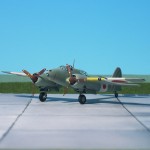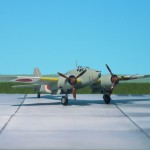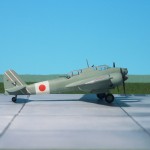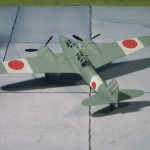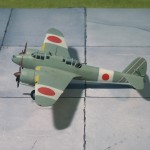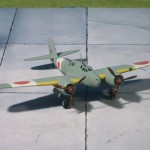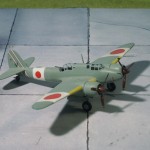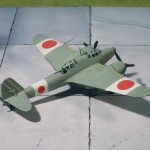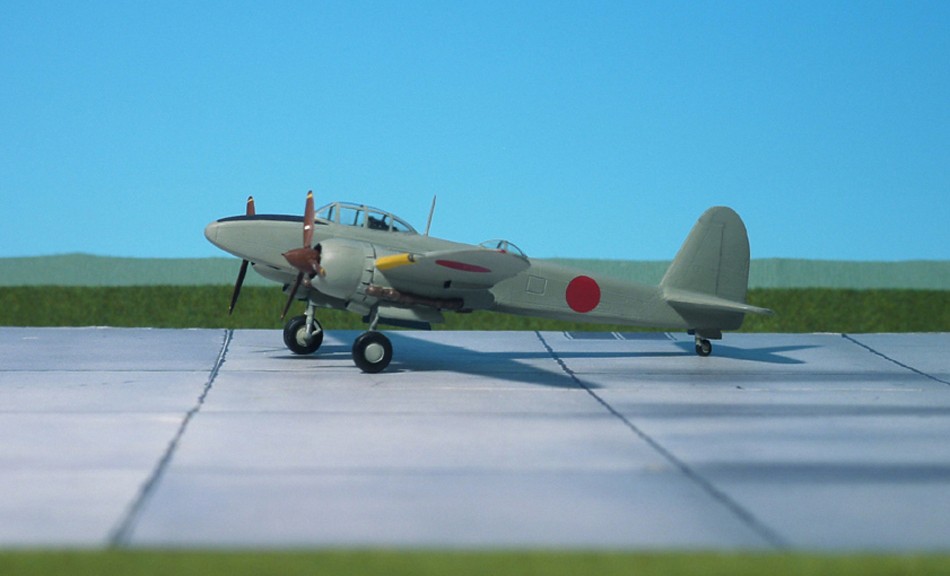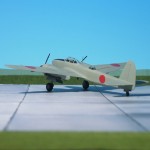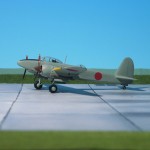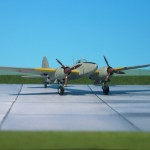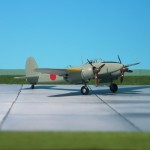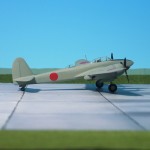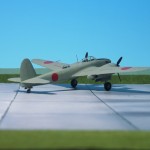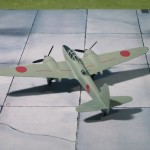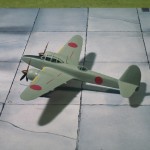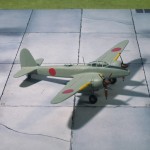TYPE: Twin-engined heavy fighter, ground attack aircraft and night fighter
ACCOMMODATION: Pilot and radio operator/gunner
POWER PLANT: Two Mitsubishi Ha-102radial engines, rated at 1080 hp each
PERFORMANCE: 373 mph at 9,186 ft
COMMENT: The primary task of the Kawasaki Ki-45 “Toryu” , it’s design dates back to the late 1930th , was long-range escort of bombers. But it took a long time until the first pre-series aircraft were completed and flight testing initiated. Soon it became clear that the model has to be revised. This new aircraft, Ki-45-KAI (Kaizo means modified) was in fact a totally new design and performed completely satisfactory during its initial flight tests. Orders for quantity production were placed and the first aircrafts reached units by August 1942. The increasing use by the USAAF of B-24 Liberators by night called for improvisation on the part of the Imperial Army as the service possessed no specialized night fighters. The Ki-45-KAI-Ko was a choice for the nocturnal role and a field modification resulted in installation of a pair of Ho-103 machine guns or Ho-5 cannon mounted obliquely to fire upward and forward at an angle of some 70 degrees. While lacking AI radar and being forced to rely on ground guidance to intercept intruders, with searchlight illuminating the quarry, the Toryu enjoyed some success as a night fighter (Ref.: 5).
